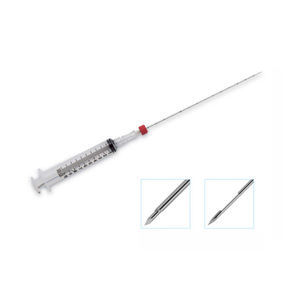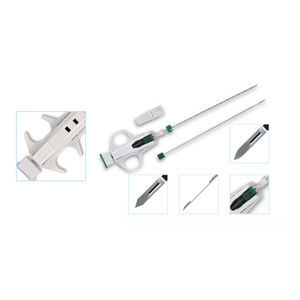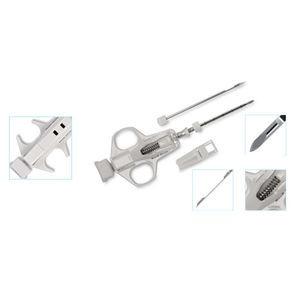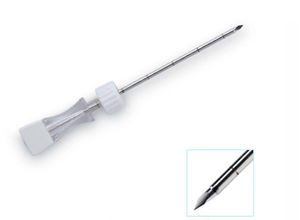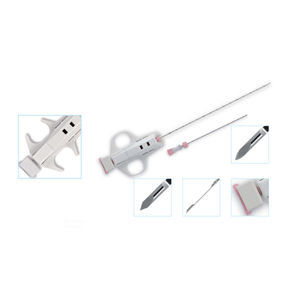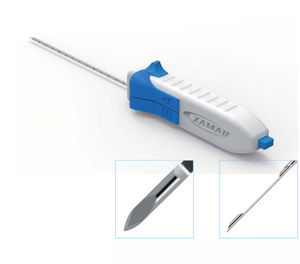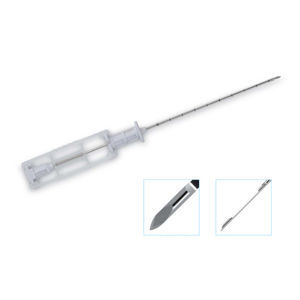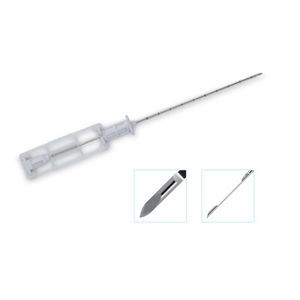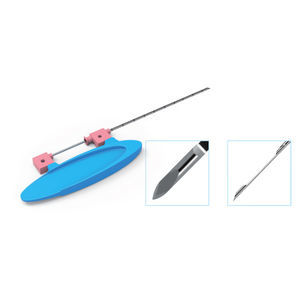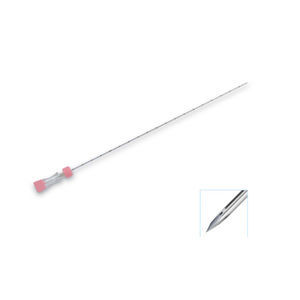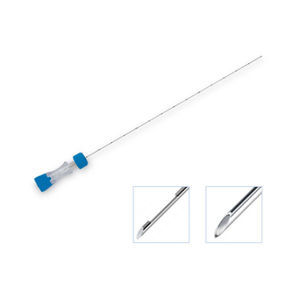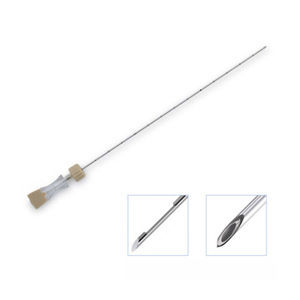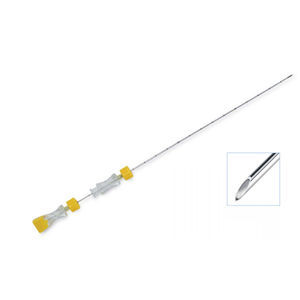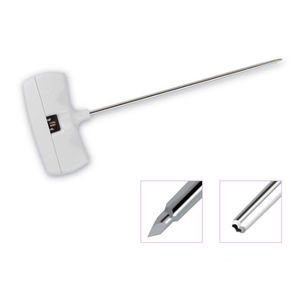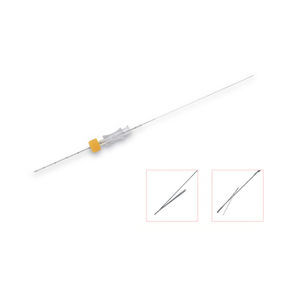

- Products
- Catalogs
- News & Trends
- Exhibitions
Cytological biopsy needle Funiculus CentesisChibaechogenic20G
Add to favorites
Compare this product
fo_shop_gate_exact_title
Characteristics
- Applications
- cytological biopsy
- Needle type
- Chiba
- Options
- echogenic
- Diameter (gauge)
- 20G, 21G
Description
n 1883., Paul Ehrlich performed the first liver aspiration biopsy. Afterwards the technique has been applied also to other organs to determine the nature of the collected cells (inflammation, infection, tumor). Nowdays the most common cytological needle is "Chiba needle", which has been developed around the year 1966. by Kunio Okuda and his Chiba University assistants to perform a percutaneous cholangiography. The same kind of needle is used to perform prenatal diagnosis procedures.
Cord-centesis set ( Funiculus - Centesis)
Chiba type needle. Depth marks and depth stopper. It includes a 3 – ways stopcock, extension tube, 20cc syringe with stopper. Removable stylets perfectly coupled with needle point. Echogenic marker: inner
PRECAUTIONS
The procedure described is for guidance only. Each physician must, of course, evaluate the appropriateness of the procedure based on their clinical training and experience and the type of procedure to be performed. The needle must be used only once.
DIRECTIONS FOR USE
1. Inspect the package for damage and expiration date.
2. Examine the device for signs of damage.
3. Check that the product corresponds to the needle to be used.
4. Prep the patient in the standard and customary way for the procedure to be performed.
5. Remove needle protector
Catalogs
No catalogs are available for this product.
See all of Zamar Care‘s catalogs*Prices are pre-tax. They exclude delivery charges and customs duties and do not include additional charges for installation or activation options. Prices are indicative only and may vary by country, with changes to the cost of raw materials and exchange rates.



